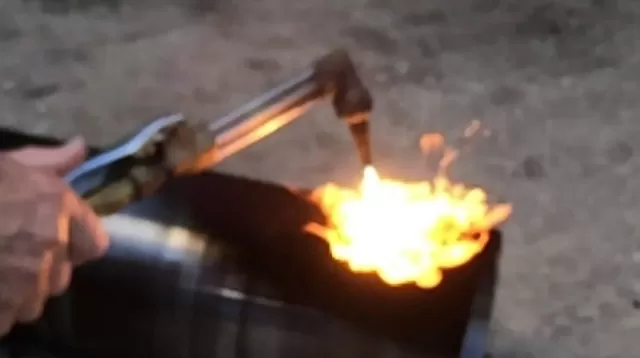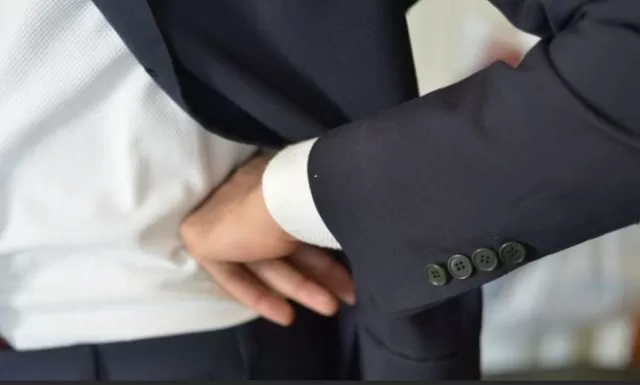Harmful Habits DIYers Should Abandon. To ensure safety and achieve outstanding results in your home improvement projects, consider the following tipsBy following these tips and approaching your home improvement projects with care and diligence, you can ensure both your safety and the successful completion of your endeavors.
Prioritize Safety: Avoid the Temptation of Cutting Corners

When you take on a project solo, you enjoy the freedom to work at your own pace without anyone offering unsolicited advice or standing over your shoulder.
However, it’s crucial to remember that having another person on-site often serves as a valuable safety precaution, preventing you from taking shortcuts and engaging in corner-cutting practices that could potentially lead to accidents.
Take a moment to assess whether you might be guilty of some common bad habits in your DIY endeavors, and consider the guidance on how to break them.
Prioritizing safety should always be at the forefront of any project, even when you’re flying solo.
Safe Ladder Practices: Avoiding the Dangers
It’s a sobering fact that falls rank as the third leading cause of accidental deaths in North America and worldwide, as reported by the Centers for Disease Control.
Unfortunately, ladders are often misused, not only on professional job sites but also in DIY projects at home. Unsafe practices include improper ladder positioning, disregarding manufacturer warnings, and using ladder steps as a makeshift tool surface.
To prioritize safety in your future endeavors, always ensure that your ladder is placed on a level surface.
Adhere to the crucial four-to-one rule, which means moving the ladder’s base one foot away from the wall for every four feet of height. Pay close attention to the ladder’s instructions, particularly the reminder never to stand on the top two steps.
When it comes to tools, keep them on your person in a tool belt rather than on the ladder steps where they can easily fall—potentially causing damage or harm to those below.
By following these safe ladder practices, you can significantly reduce the risk of accidents and contribute to a safer work environment.
Blow Torch Safety: Extinguish Before You Finish

Blow torches are invaluable tools for soldering metal, especially in plumbing tasks such as re-plumbing an exterior faucet or replacing a water line.
However, mishandling a blow torch, which generates extremely high temperatures and flames, can lead to serious errors. One of the most common and dangerous mistakes is leaving the torch lit between applications.
Whether you need to apply more solder or make adjustments to a metal pipe’s grip, always prioritize safety by turning off the torch when it’s not in use.
Furthermore, ensure that the torch’s tip is pointed away from you, your work area, and any flammable objects when you’re ready to ignite it again.
To kick the hazardous habit of leaving the torch lit, consider investing in a model equipped with a trigger that must be depressed to light it.
This added safety feature can provide peace of mind and significantly reduce the risk of accidents associated with blow torch usage.
Prioritize Safety: Don\’t Neglect Protective Gear
Wearing the right personal protective equipment (PPE) is a straightforward yet crucial practice that can literally save your life.
Unfortunately, it’s not uncommon for DIY enthusiasts to disregard essential gear like gloves, goggles, face masks, and ear protection (especially when using power tools).
Skipping these vital items can put your skin, respiratory health, vision, and hearing at risk.
Moreover, it can potentially lead to injuries, which not only jeopardize your well-being but also delay the completion of your project.
Remember, when it comes to DIY projects, safety should always be your top priority.
Invest in and consistently use the appropriate protective gear to ensure that you not only finish your project successfully but also safeguard your health and well-being throughout the process.
Dress for Safety: Choose Appropriate Work Attire

While comfort is essential during DIY projects, some casual clothing items simply don’t belong on a worksite.
Tools such as spinning blades, rotating drills, and rotary tools can easily snag on dangling sleeves or loose-fitting sweatshirts. If you’re fortunate, you might only end up with torn clothing; but in less fortunate situations, metal blades and drill bits can cause cuts and gouges on your skin, while abrasive disks can lead to similar injuries.
Sandals and flip-flops are another big no-no.
Always opt for closed-toe shoes and consider investing in a good pair of work shoes, especially if you’re tackling a substantial project.
Your safety should be the top priority, so make sure to dress appropriately for the task at hand.
Choose attire that won’t pose risks or distractions, and you’ll not only protect yourself but also ensure a smoother and safer DIY experience.
*The information is for reference only.